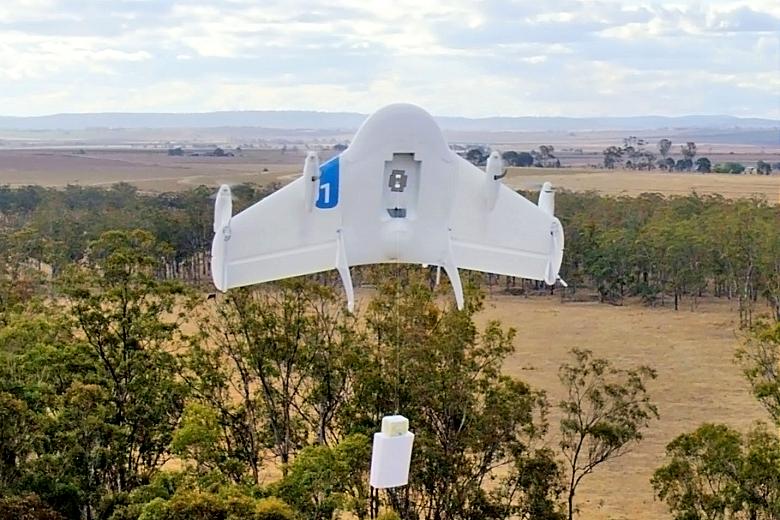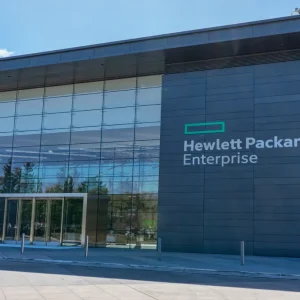
Despite having been quiet at CES 2016, Google is this week making headlines across the main IoT verticals including drones, artificial intelligence (AI) and virtual reality (VR).
On Tuesday, the company filed a patent for a delivery drone device which the company described as a "delivery receptacle".
The "aerial delivery device" is intended to take packages from a deposit site to a secure location, namely, a user’s home.
The patent was filled to the United States Patent and Trademark Office (USPTO) by Google itself and not its umbrella company Alphabet.
In the patent, Google said that the delivery receptacle emits infrared (IR) beacons from one or more IR beacon transmitters.
"An aerial delivery device detects the IR beacon and uses the beacons to navigate to the delivery receptacle. The delivery receptacle receives IR beacon responses from the aerial delivery device and continually or periodically directs the IR beacons in the direction of the aerial delivery device," it reads.
The aerial delivery device deposits the package in the delivery receptacle. After receiving the package, the delivery receptacle transports the package to a secure location, such as into a garage, according to Google.
Google’s work around drones started in 2012, however it took until August 2014 for the company to unveil that it was working on a top secret project code named Project Wing.
Tests have been rolled out in Australia and the company hopes to use the technology to deliver goods to people living in remote locations, such as those in need of disaster relief, where typical aircraft deliveries would not be possible.
In March last year, Google X, the Google’s secretive research and development arm, said it had scrapped its original drone design for Project Wing and would start working on a new prototype, which has this week been granted the mentioned patent.
In November, the company announced that it intends to launch its drone delivery service by 2017 aiming at delivery times of up to 30 minutes from door-to-door.
Project Wing lead David Vos said at the time: "Our goal is to have commercial business up and running in 2017."
Drone air deliveries, have however sparked some concern amongst industry experts. Speaking to CBR, Dave Hrycyszyn, founder of Head London, said that drone hijacking is a real possibility and something companies need to look at before putting their solutions to the sky.
He said: "I would think of drone hijacking as being the possible big deal. Imagine that Amazon or Google in a few years have 100,000 drones running deliveries all over the place and the system is working well. What does an exploit at that point mean? Does someone take control of the Amazon drone fleet?
"When we talk about things that can affect the physical world, the security problem becomes quite different."

Yet, Google has not only made advancements in the unmanned flying devices space. The company has also successfully built an intelligent computer that uses AI and has proved to be smarter than humans.
The company’s AI program has beaten the European champion of the Chinese board game Go, Fan Hui. The game Go was first played in China more than 2,500 years ago. The company explained that it trained the neural networks on 30 million moves from games played by human experts, until it could predict the human move 57% of the time.
However, Google’s "goal is to beat the best human players, not just mimic them".
AlphaGo, the AI computer programme, then learned to discover new strategies for itself, by playing thousands of games between its neural networks, and adjusting the connections using a trial-and-error process known as reinforcement learning. The system also makes extensive use of Google Cloud Platform.
The secret match between Google’s AlphaGo and Hui was played in London at Google’s offices last October.
Ian Marsden, CTO at Eseye told CBR:"The vast majority of AI today is not triggered by humans but is used as a means to spot new behaviours and automate complex interactions between devices in an IoT environment, all without any human interaction.
"It is device and network behaviour searches; and the subsequent clustering of activity patterns that trigger actions to ensure proactive and relevant system management."
Adding to all this, Google has also unveiled this week that since launching its VR set Cardboard in 2014, it has shipped five million units.
Cardboard is a $10 DIY headset which allows the user to place its mobile phone inside and watch a video in VR.
The Alphabet’s arm said that it has also registered 25 million downloads of Cardboard apps from its Google Play app store. In total, the company estimates that more than 350,000 hours of YouTube videos have also been watched in VR mood.
Earlier this month, Google also stepped up its VR game against Facebook and Microsoft by creating its own VR business arm.
A Google source confirmed to CBR at the time that "Google has appointed Clay Bavor as vice president of Virtual Reality at Google".
In a recent analysis run by CBR, we explored the potential of the VR market for Google. With the VR market expected to break the $1 billion barrier this year, one of the main areas Google is set to become prominent in is around the content space.
In 2015, the company unveiled the Expeditions program based on its Cardboard, proving that the company is serious about VR content development.
The Expeditions platform has been built to be used in classrooms around the world and includes over 100 journeys to different parts of the world, including underwater experiences.
Dr. Kevin Curran, senior member of the IEEE, told CBR: "Google are one of the few companies who have a hope of making a splash in this marketplace. Virtual reality is the future. It is a no-brainer for those in the tech industry."






